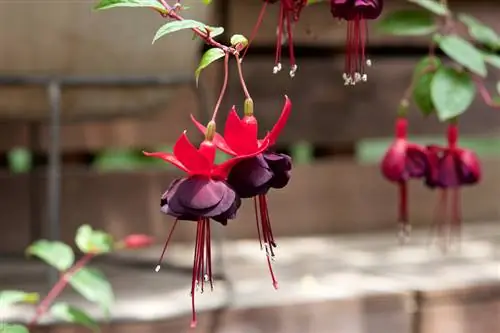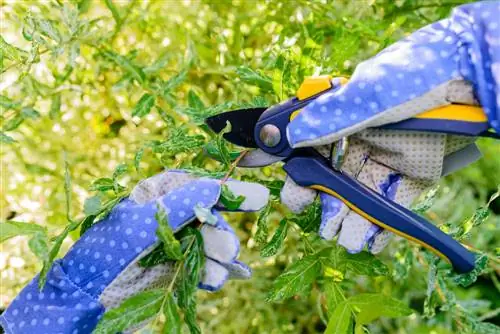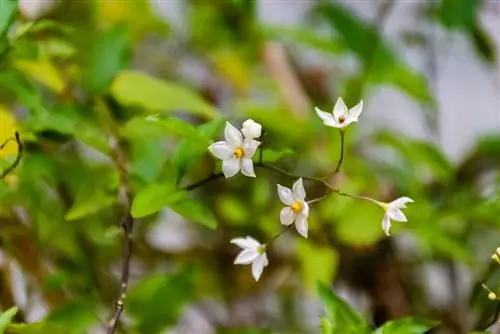- Author admin [email protected].
- Public 2023-12-16 16:46.
- Last modified 2025-01-23 11:22.
The similarity to real jasmine gave the jasmine-flowered nightshade (bot. Solanum jasminoides) its name. In contrast to this, the non-hardy summer jasmine, which is what the jasmine-flowered nightshade is also called, blooms in the summer months.

Is summer jasmine hardy?
Summer jasmine (Solanum jasminoides) is generally not hardy and requires protection during the cold months. Cool wintering at a minimum of +5 °C is possible, but moderately warm temperatures between 12 °C and 15 °C are ideal, e.g. in a heated greenhouse or winter garden.
How should summer jasmine overwinter?
Summer jasmine prefers to overwinter in a moderately warm and bright place, for example in a slightly heated greenhouse or a winter garden that is not too warm. However, cool wintering at a minimum of + 5 °C is also possible. So it should be possible to find a suitable place, but because of its toxicity it should be as inaccessible to small children and pets as possible.
The cooler it is in the winter quarters, the darker it can be there. A basement room does not necessarily have to be bright. Here the summer jasmine is only watered every now and then so that its root ball does not dry out completely. Fertilizer is not necessary throughout the winter.
Why does summer jasmine lose its leaves?
If it is cold and/or dark in the winter quarters, the summer jasmine loses its leaves. This is a completely natural process and nothing to worry about. In this case, you should just reduce the amount of watering. In spring the jasmine-flowered nightshade will sprout again. To save space in the winter quarters, you can cut back your summer jasmine in the fall.
The summer jasmine in the winter garden
Temperatures between around 12 °C and 15 °C are ideal for overwintering summer jasmine. At these temperatures, the plant remains green and decorative even in winter. This means that more moisture evaporates through the leaves and the summer jasmine needs more water. Water the plant when necessary and not too abundantly. The substrate should always be slightly moist but not wet.
The most important things in brief:
- generally not hardy
- cool winter storage possible (basement, stairwell)
- ideal: moderately warm wintering (heated greenhouse, winter garden)
- absolutely unsuitable: warm winter quarters (living room)
- the cooler the winter quarters, the less light needed
- loses its leaves in cool temperatures
- water less in winter and do not fertilize
Tip
Slowly get your summer jasmine used to fresh air and sunlight again in the spring.






